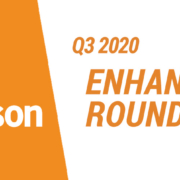5 Reasons Marketing Teams Benefit from Microsoft Dynamics CRM and Marketing Automation Integration
 What are the 5 ways marketing teams benefit from Microsoft Dynamics CRM and Marketing Automation integration?
What are the 5 ways marketing teams benefit from Microsoft Dynamics CRM and Marketing Automation integration?
In this article we’ll discuss 5 ways marketing marketing teams benefit from integrating Microsoft Dynamics CRM with marketing automation. Sales reps have always had their system of record, a CRM. A CRM is a common repository, a place to keep notes, contact information, and opportunities. Besides a need for pulling reports, marketers never had the need to access the CRM. The demand for businesses to grow, increased competition, and advancement in software as a service, has fostered a new suite of software capabilities – commonly referred to as marketing automation. Marketing automation is a suite of software services that help marketers do their job better and more efficiently. The problem is that marketers have their software to work with, and sales has their own. By integrating the two systems together sales and marketers can share data and help each other get the job done faster. In particular, there are 5 ways marketing teams benefit from Microsoft Dynamics CRM and marketing automation integration:
- Integrated views that include prospect activity.
- Better segmentation.
- Trigger actions on data changes.
- Integrated lead qualification.
- Data is in sync.
Integrated Views
A marketing automation platform, such as Lead Liaison’s Lead Management Automation software, helps marketers with outbound marketing, as well as inbound marketing. One key aspect of these platforms is being able to track all inbound marketer and engagement with outbound marketing. A marketing automation platform will build rich profiles of prospects as they download documents, watch videos, click paid ads, submit forms, visit web pages, and more. This information is crucial sales insight that needs to be available to sales reps in real-time. When integrating marketing automation and Microsoft Dynamics, this insight is mapped to Lead and Contact records in Dynamics. As a result, a sales person never has to leave Microsoft Dynamics to understand how their Lead/Contact has engaged with their company. It’s all inline in the Lead/Contact record.
Better Segmentation
Marketers used email systems like Mailchimp and Constant Contact before marketing automation existed. In the “olden days”, a marketer would use a “batch and blast” approach. They’d create a single email and send that email to a large list. With modern marketing platforms, marketers can easily segment their database. Not only can they use demographic data from Microsoft Dynamics CRM (things such as job title, industry, location), they can segment off of engagement data. For example, easily build a one-time list, or ongoing list that’s dynamically created, of all prospects who’ve had inbound activity within the past 30 days, live in five states, and downloaded a specific piece of content. What’s the point? Instead of demographic criteria, they’ve got more criteria to choose from, allowing them to build smaller segments (groups) of people to better tailor the message to a recipient’s interests. This helps marketers deliver a more personalized message – driving higher click through and open rates with email.
Trigger Actions
Marketers have greater control over how and when they send follow up content for nurturing when integrating marketing automation with Microsoft Dynamics CRM. Using automation, a marketer can monitor changes in a data field to detect if the value changes to any matching criteria. When this happens, the marketer can execute any number of tasks. For example, if the Lead Status field changes to Customer, they could trigger an automation that onboards a client and walks them through the customer experience, getting them closer to cross-sell and upsell opportunities down the line.
Integrated Lead Qualification
Prior to having marketing automation integrated with Microsoft Dynamics CRM, all leads look the same to a sales rep. In other words, the database is flat. The only way to differentiate leads is to use some sort of weighted scoring system. Marketing automation platforms refer to this as Lead Scoring, in Lead Liaison’s world it’s simply Scoring. For example, when your key documents, such as Case Studies, get downloaded, individual scores can be assigned to the action. With granular level control over scoring various interactions with prospects, the marketing automation system sums all individual scores into a single score, which is then shared with Microsoft Dynamics CRM in a Score field. Now, sales can create reports that give priority to their Leads and Contacts. Reps can make better use of their time by focusing on the highest scoring Leads and Contacts first.
Data is in Sync
With sales reps having their own stack, and marketing having theirs, it would be awful if the two systems did not communicate with one another and had data out of sync. With systems like Lead Liaison and Microsoft Dynamics CRM integrated, marketers don’t have to worry about disparate systems. When Lead, Contact, and Opportunity data changes in Microsoft Dynamics CRM, it also gets updated in Lead Liaison…and vice versa. Marketers are not slave to the way the data exchange works either. They can set which fields in the CRM map to fields in the marketing automation platform, and set the syncing direction. For example, if the marketer never wants the marketing automation platform to update the Lead Source in Microsoft Dynamics CRM, then they can set the sync direction to one-way, going from CRM to marketing automation only – and not the other way around.
We hope you enjoyed this article on 5 ways marketing teams benefit from Microsoft Dynamics CRM and marketing automation integration! For more information on Lead Liaison’s integration of LMA and Microsoft Dynamics CRM see this page.

 What are the 5 ways marketing teams benefit from Microsoft Dynamics CRM and Marketing Automation integration?
What are the 5 ways marketing teams benefit from Microsoft Dynamics CRM and Marketing Automation integration?


